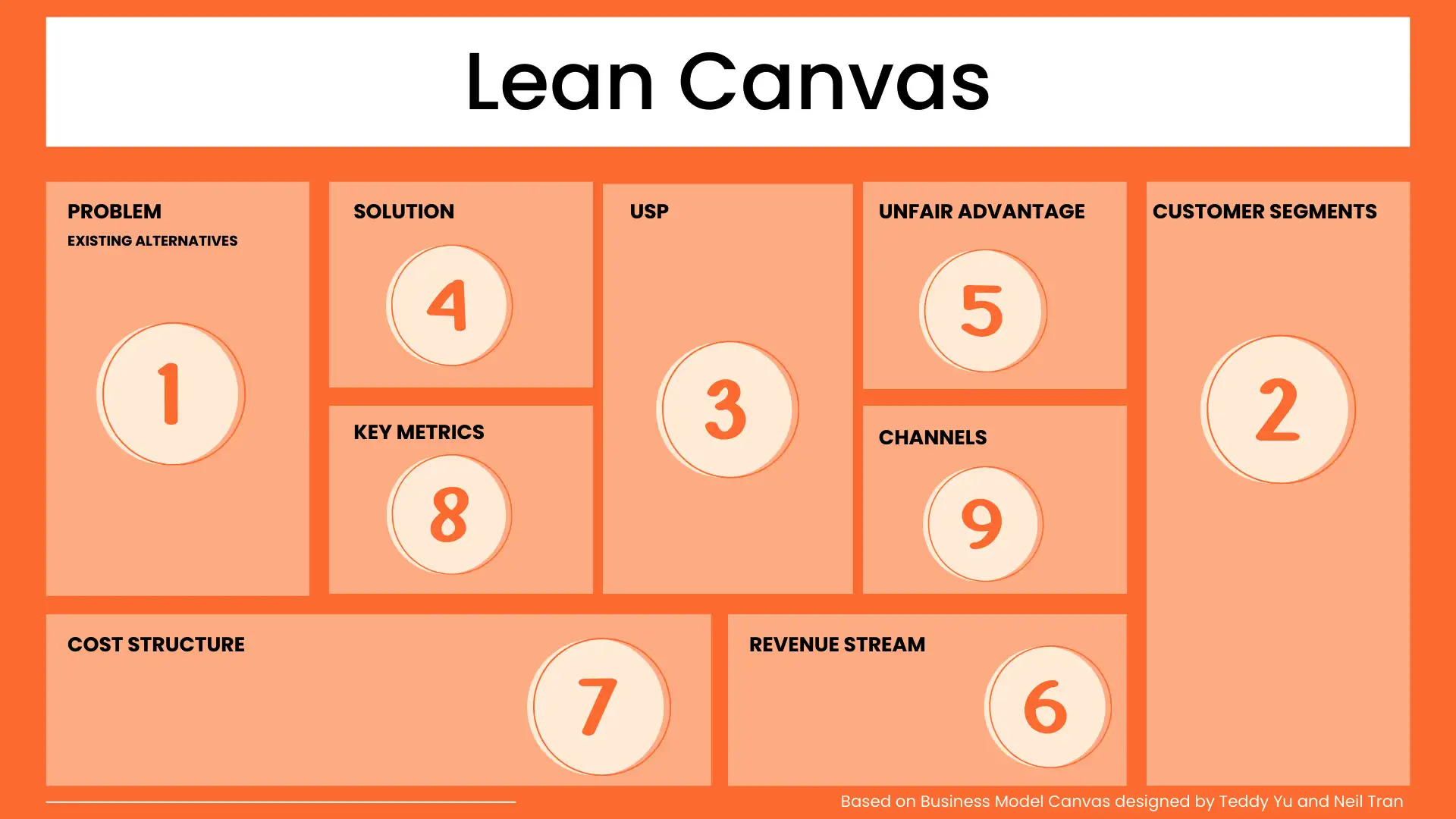Why Great Products Fail to Grow: A Reality Check for Entrepreneurs
Why do some products—despite being polished, optimized, and backed by tireless teams—struggle to grow, while other products that seem rougher around the edges scale rapidly?
This paradox frustrates many founders. But as startup coach and Lean Canvas creator Ash Maurya discovered from personal experience, the key often lies not in what you add to your product, but in the growth mechanisms built inside your business model.

The Lean Canvas Paradox
Lean Canvas has become a widely adopted tool for startup planning. Yet, in its early days, something puzzling happened.
Nine months after launch, Maurya’s product had steady traction: around 400 new sign-ups per month. But here’s the catch—300 churned at the same time. Net growth? Just 100 users a month.
At that rate, reaching 10,000 customers would take 8 years.
Even more frustrating: less user-friendly tools in the same space were growing faster. Something was broken—but it wasn’t usability.
When Conventional Optimization Fails
Like most entrepreneurs, Maurya’s team tried everything in the playbook:
- Optimizing landing pages
- Running A/B tests on email sequences
- Experimenting with growth hacks
- Extending their workdays to push micro-improvements
And after months of effort? Growth flatlined at the same +100 users per month.
The lesson? “Making something incrementally better” is not the same as unlocking growth.

Finding the Real Constraint
Looking into user data revealed two structural problems:
Pricing that Blocked Collaboration
Lean Canvas charged per user. That meant when one founder shared a canvas with their team, each additional teammate needed to pay.
The result: teams defaulted to sharing just one account. Instead of promoting adoption across an entire startup team, the pricing actively discouraged expansion.
Broken Viral Loops
Entrepreneurs didn’t just share their canvases with teammates—they also showed them to advisors and investors. Those advisors, in turn, wanted to share the tool with other founders they mentored.
This could have been a powerful referral loop. But with no designed pathway to spread, this natural engine was cut off.
In other words: the growth loop existed, but the product design blocked it.
Growth as a System: Feedback Loops Matter
In The Fifth Discipline, Peter Senge explains that every living system depends on feedback loops.
- Positive loops push systems toward exponential growth.
- Negative loops stabilize systems but can also prevent expansion.
In business terms, this translates to two fundamental engines:
Acquisition System – turning strangers into trial users.
Retention & Expansion System – turning users into paying customers who bring in others.
Most founders think linearly: get customers → serve them well → hope they spread the word.
But real growth happens when you deliberately connect the two systems into a self-reinforcing cycle.
Your happy customers aren’t just revenue; they are your growth engine—if you design for it.
The Three Types of Growth Loops
Through research and case studies, three recurring types of feedback loops emerge:
Revenue Growth Loop
- Revenue earned funds customer acquisition.
- Example: Paid ads, sales teams, or content marketing.
- Sustainability depends on LTV > CAC (lifetime value greater than acquisition cost).
- Benchmarks: In SaaS, healthy companies target at least a 3:1 LTV/CAC ratio (ProfitWell, 2021).
Referral Growth Loop
- Growth powered by users spreading the product during normal use.
- Example: Dropbox—users shared files, and recipients had to register. Plus, dual-sided incentives (both inviter and invitee got more storage).
- Critical insight: Sharing works only if it’s intrinsic to the product use case, not as a bolted-on feature.
Retention Growth Loop
- Users create content or data that makes the product more valuable to others.
- Example: YouTube.
- Creators upload.
- Audiences consume.
- Some become creators.
- Network effect compounds (per Metcalfe’s Law).
This is why platforms with user-generated content or community-driven assets (Figma plugins, GitHub repos, Airbnb listings) often scale faster than pure utility tools.
Lean Canvas’s Breakthrough
Maurya’s team made two simple but structural changes:
Switched from per-user pricing to team-based pricing: One subscription for up to five teammates. This removed collaboration friction.
Launched a white-label program for accelerators, mentors, and investors, allowing them to manage multiple startups under one account.
The impact? Within 90 days, monthly growth jumped 10x—from 100 net users to 1,000.
Same product. Same market. The difference was removing barriers from the growth loop.
As behavioral economist Richard Thaler notes in Nudge, small frictions can block big outcomes, while small nudges can unlock exponential change.
How to Identify Your Own Growth Engine
A practical framework: ask yourself three questions.
Revenue Loop → Can I reinvest earnings to systematically acquire more users?
Referral Loop → Do users naturally want to share during normal use? How can I make sharing effortless?
Retention Loop → Does user-created content or data generate increasing value for newcomers?
Case Example: VR Design Tools
A startup building VR visualization software for architects initially focused on hyper-realistic rendering.
But the real insight came later: every architect was painstakingly rebuilding models from scratch.
When the platform allowed architects to publish reusable 3D assets (chairs, lighting, textures), it evolved into a shared library. Now, each contribution made the platform more valuable, resembling YouTube’s loop.
That shift—from tool to ecosystem—triggered scalable growth.
Why You Should Focus on One Loop First
An important warning for founders: don’t chase multiple loops at once.
Why? Because each loop requires repeated testing, optimizing, and removing friction.
Spreading energy across three loops may result in three half-baked engines.
But mastering one dominant loop to “90% efficiency” can drive compounding returns. Early-stage startups rarely have the resources for parallel loop-building.
The Mindset Shift Entrepreneurs Need
Too many founders build first and think about growth later. But growth isn’t an afterthought—it should be part of your business model architecture from day one.
Like rocket design, where the destination (orbit, moon, Mars) defines the propulsion system, your product design should reflect which growth loop fuels your journey.
- If growth depends on referrals, design features that naturally incentivize invitations.
- If growth depends on content retention, design around contributions that keep multiplying value.
- If growth depends on reinvestment loops, ensure your unit economics unlock reinvestment.
This shift—from “product-first” to “growth-first product design”—may be the most critical competitive edge an entrepreneur can create.
Closing Thought
Growth isn’t magic. It’s not about optimizing to perfection or endlessly adding features. It’s about recognizing (and deliberately engineering) the loops already waiting inside your business—and freeing them to work.
👉 The next time your product feels “stuck,” don’t just tweak copy or run another A/B test. Step back and ask: Which growth loop is hidden in my business model—and what’s blocking it?

